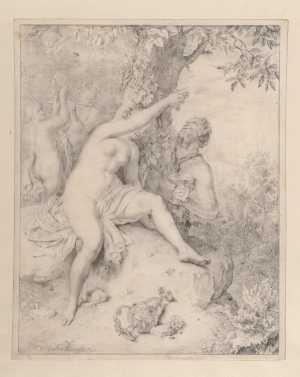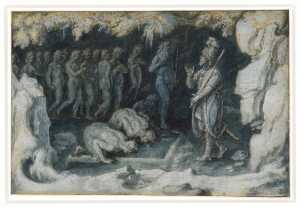Specifications
| Title | Personification of the Planet Mercury |
|---|---|
| Material and technique | Pen and brown ink |
| Object type |
Drawing
> Two-dimensional object
> Art object
|
| Location | This object is in storage |
| Dimensions |
Height 196 mm Width 158 mm |
|---|---|
| Artists |
Attributed to:
Girolamo Mocetto
Draughtsman: Anoniem |
| Accession number | MB 947 (PK) |
| Credits | Loan Stichting Museum Boijmans Van Beuningen (former Koenigs collection), 1940 |
| Department | Drawings & Prints |
| Acquisition date | 1940 |
| Creation date | in circa 1475-1500 |
| Watermark | none (vV, 5P) |
| Inscriptions | 'fami.[?] Marcorio' (verso, upper left, pen and brown ink), 'Antiqua' (idem, upper right, pen and brown ink), '212' (idem, below left, pencil), '2' (idem, below right, pencil), 'f 500' (idem, below left, pencil) |
| Mark | L.1023a (Koenigs) not present |
| Provenance | Art dealer Nicolaas Beets, Amsterdam; Franz W. Koenigs (1881-1941, L.1023a), Haarlem, acquired in 1935; D.G. van Beuningen (1877-1955), Rotterdam, acquired with the Koenigs Collection in 1940 and donated to Stichting Museum Boijmans Van Beuningen |
| Exhibitions | Amsterdam 1934, no. 537; Paris/Rotterdam/Haarlem 1962, no. 14; Venice/Florence 1985, no. 10 |
| Internal exhibitions |
Italiaanse tekeningen in Nederlands bezit (1962) |
| Research |
Show research Italian Drawings 1400-1600 |
| Literature | Amsterdam 1934, no. 537 (towards Fr. del Cossa); Paris/Rotterdam/Haarlem 1962, no. 14, pl. 17 (Padua school); Byam Shaw 1978, no. 40, ill. (Padua school); Aikema/Meijer 1985, no. 10, ill. (Mocetto or circle of) |
| Material | |
| Object | |
| Geographical origin | Italy > Southern Europe > Europe |
Do you have corrections or additional information about this work? Please, send us a message
























